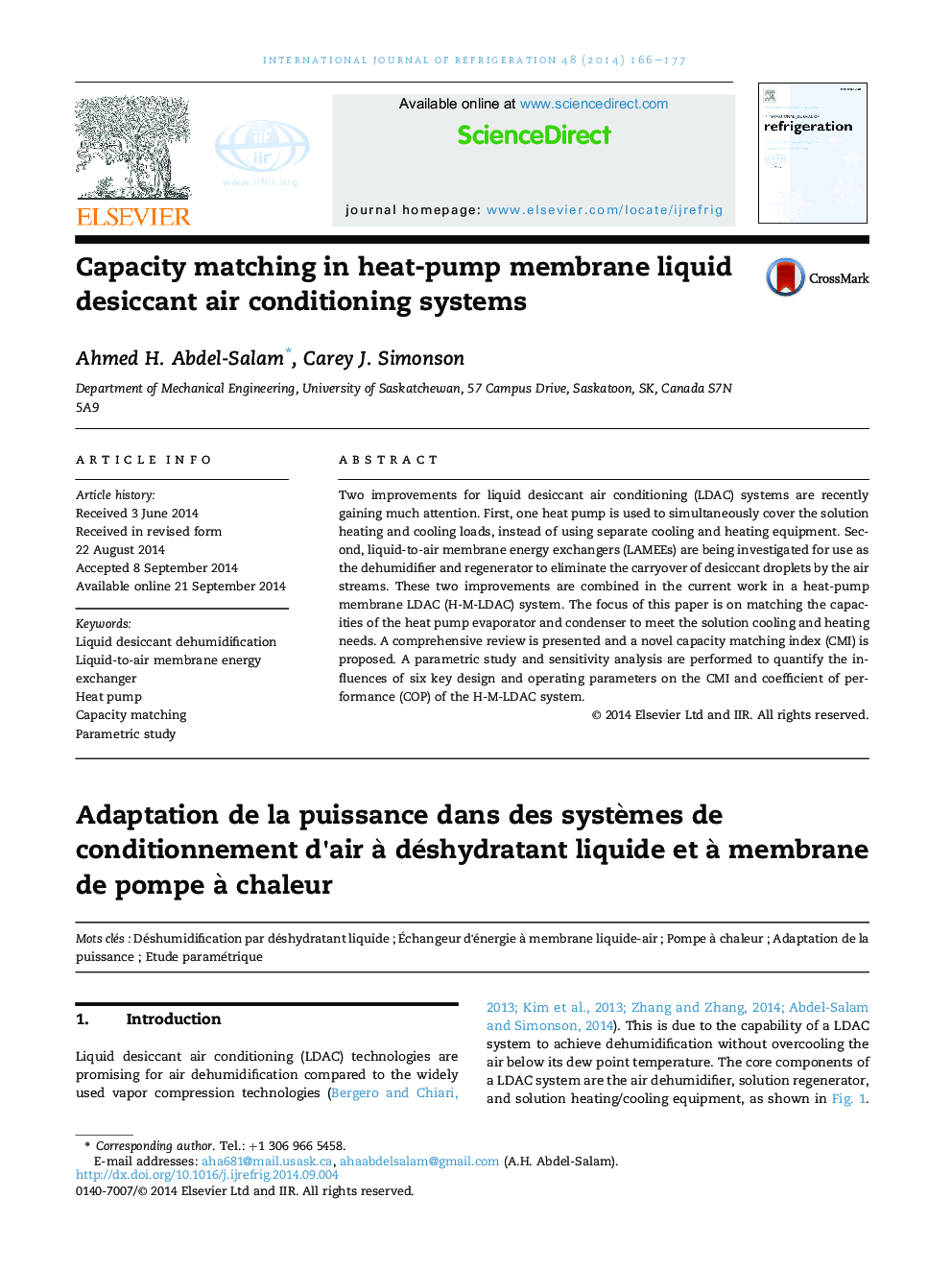| Article ID | Journal | Published Year | Pages | File Type |
|---|---|---|---|---|
| 786885 | International Journal of Refrigeration | 2014 | 12 Pages |
•An auxiliary evaporator may be required, besides the commonly used auxiliary condenser.•Capacity matching can be achieved without using an auxiliary condenser/evaporator.•Solution operating temperatures are key control parameters to achieve capacity matching.•NTU and solution-to-air heat capacity ratio have indirect influence on capacity matching.
Two improvements for liquid desiccant air conditioning (LDAC) systems are recently gaining much attention. First, one heat pump is used to simultaneously cover the solution heating and cooling loads, instead of using separate cooling and heating equipment. Second, liquid-to-air membrane energy exchangers (LAMEEs) are being investigated for use as the dehumidifier and regenerator to eliminate the carryover of desiccant droplets by the air streams. These two improvements are combined in the current work in a heat-pump membrane LDAC (H-M-LDAC) system. The focus of this paper is on matching the capacities of the heat pump evaporator and condenser to meet the solution cooling and heating needs. A comprehensive review is presented and a novel capacity matching index (CMI) is proposed. A parametric study and sensitivity analysis are performed to quantify the influences of six key design and operating parameters on the CMI and coefficient of performance (COP) of the H-M-LDAC system.
